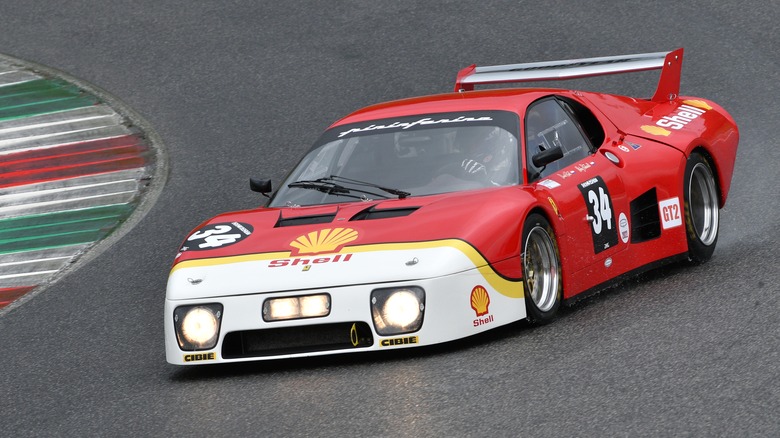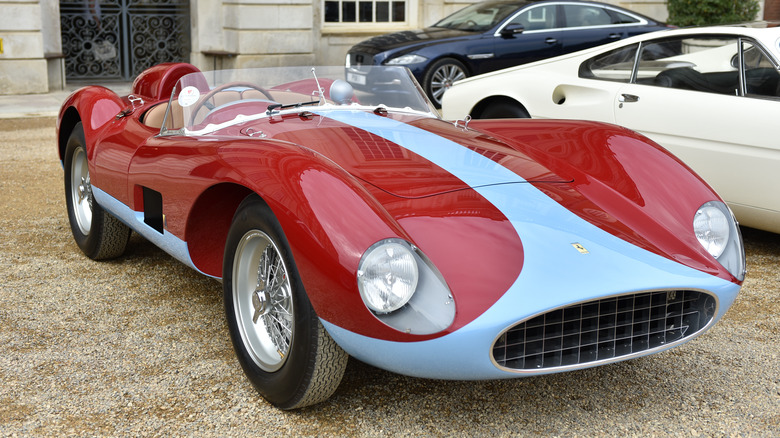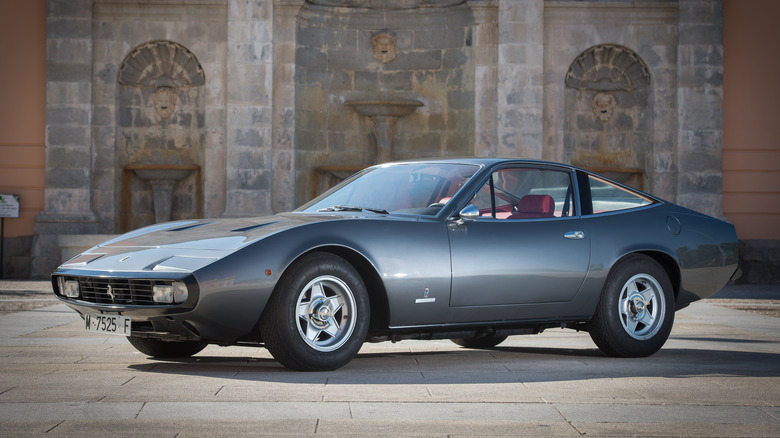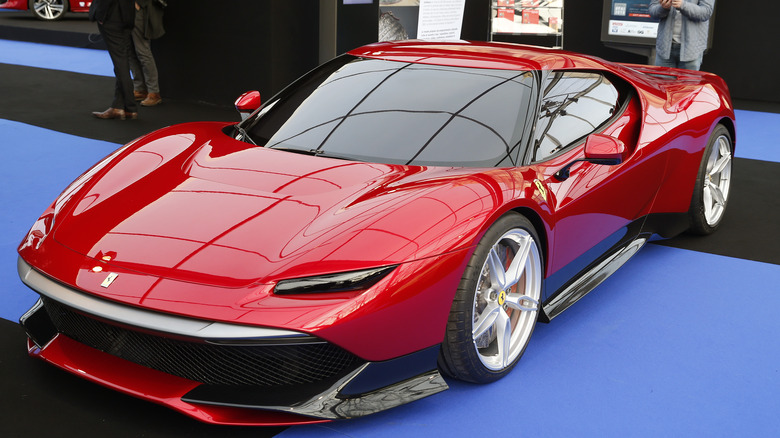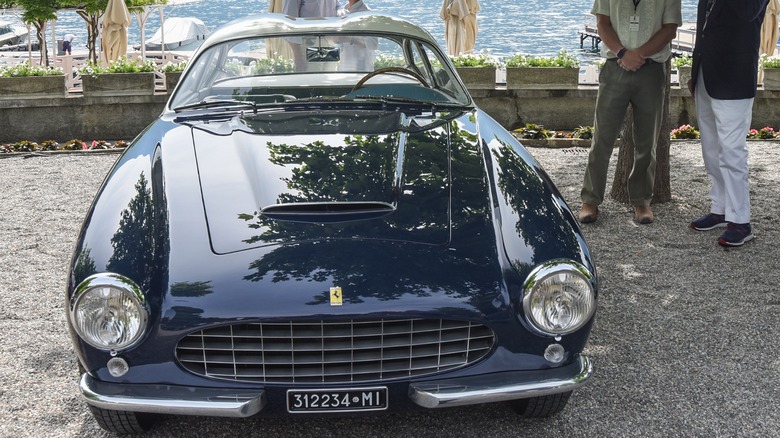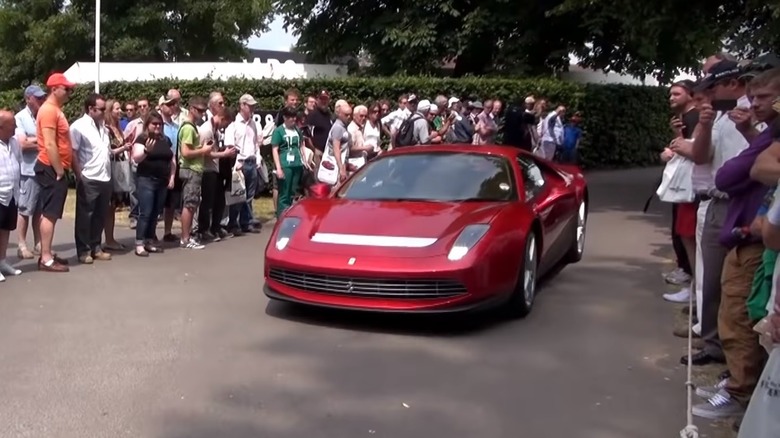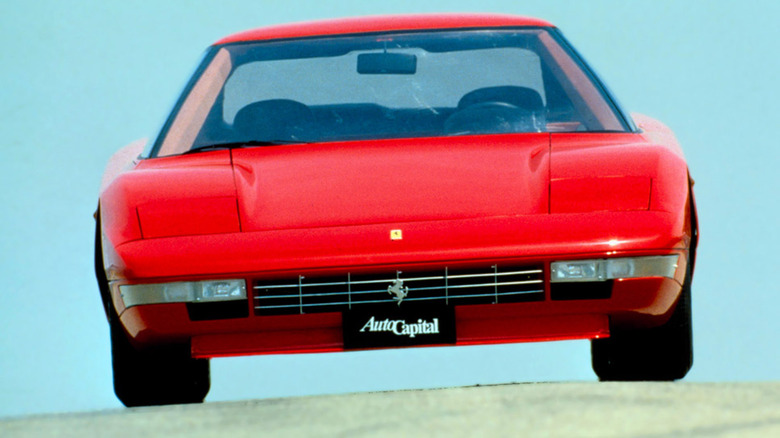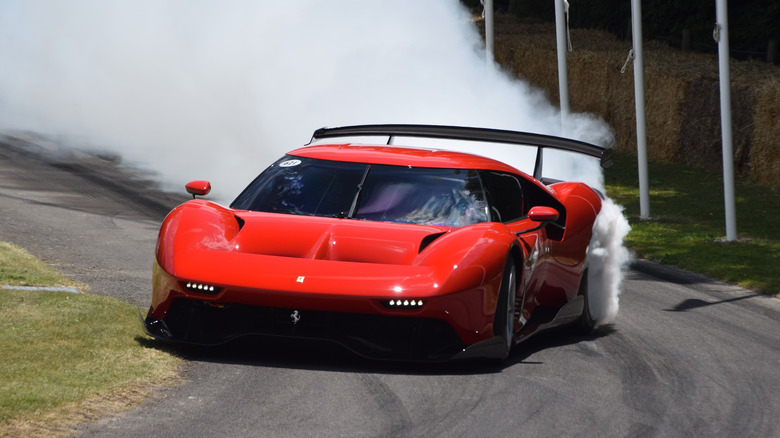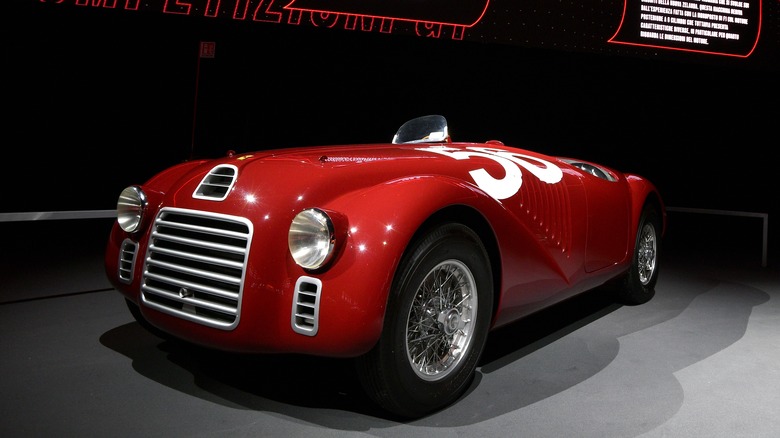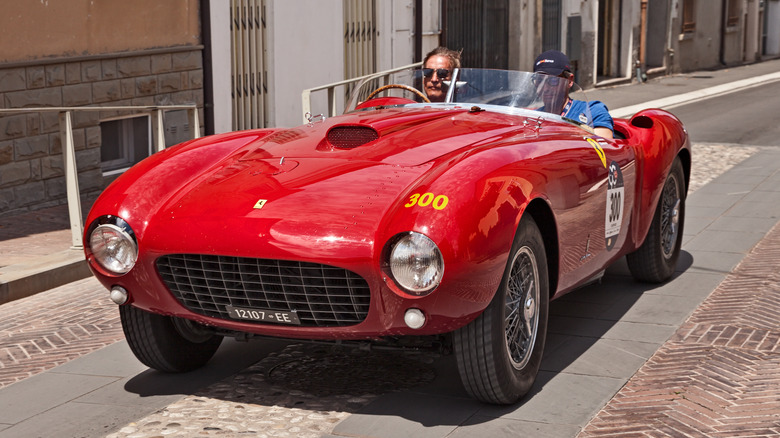10 Ferraris That Everyone Forgot Existed
The name of few automakers carries quite as much prestige as Ferrari. Since Enzo Ferrari unveiled his first creation, the 125S, in 1947, his brand has remained unrelenting in its quest for racing domination, notching up wins in almost every track-based motorsport discipline there is. Alongside this unrivaled pedigree is a carefully curated brand image, with Ferrari taking great care to ensure that its cars only end up in the hands of owners it deems appropriate custodians of its work.
With such an incredible back catalog of cars, it's inevitable that some of the brand's best vehicles are eventually forgotten. From one-off custom builds to cutting-edge prototypes, Ferrari's history is filled with models that deserve more recognition than they get, either because they're important milestones, successful racers, or in some cases, just stunning pieces of automotive artwork. They might still be worth more than most of us could ever dream of spending, but these 10 cars are arguably some of the most underappreciated Ferraris out there.
Ferrari 500 TRC
Ferrari is best known for its signature V12 and V8 engines, but in its early years, it found success with a rather different powertrain. The 1952 and 1953 Formula Two Championships were dominated by Ferrari thanks to its excellent four-cylinder motor, which left its V12 competitors in the dust. The engine was further developed and put into the 500 Testa Rossa in 1955, but a rule change meant that by 1957, the car was no longer eligible to race. To comply with the new C-section of the International Sporting Code, Ferrari unveiled the 500 Testa Rossa C, or TRC as it would become known.
Only 19 examples of the 500 TRC were built, with each one being sold off to privateer clients rather than being raced by Ferrari's factory team. The 500 TRC never managed to win any prestigious races outright, but it did notch up a class win in the 24 Hours of Le Mans and at the 12 Hours of Sebring in 1957. The car was one of the first to sport the now-legendary Testa Rossa moniker, but it marked the end of an era for the Prancing Horse brand. After the 500 TRC had been developed, Enzo Ferrari decided it was time to focus on V12 engines again, and the car ended up being the last ever four-cylinder Ferrari built.
Ferrari 365 GTC/4
The Ferrari Daytona is one of the brand's most revered models, but it was sold alongside a sibling that never reached the same levels of fame. The 365 GTC/4 is essentially a four-seater Daytona, with a longer, more angular roofline that allowed for extra luggage space as well as those two extra seats. It used the same 4.4L Colombo V12 as the Daytona, albeit with a slightly lower horsepower rating in exchange for slightly more torque. But, with 340 horsepower and a top speed of 162 mph, it was still way faster than almost anything else on the road.
While the "Daytona" is the name that most enthusiasts will remember it by, the official name for the two-seater 365 is the Ferrari 365 GTB/4. The four-seater 365 GTC/4 also gained a nickname, but one that was slightly less appealing: Gobbone, which translates from Italian as "hunchback." Needless to say, buyers were much keener on buying a Daytona than a hunchback, and the 365 GTC/4 only sold around 500 units in the short two years it was on sale. After launching in 1971, the car was replaced in late 1972 by the Ferrari 365 GT4 2+2, a much more angular, and arguably less good-looking, car.
Ferrari SP38 Deborah
Ferrari's "Special Projects" program was launched in 2007 as a way for the brand's most loyal clients to create one-off cars designed exactly to their tastes. One of the best-looking cars to emerge from that program is the 2018 Ferrari SP38 Deborah, which used the 488 GTB as a base but reimagined it, taking inspiration from the iconic F40. The engine and most of the oily bits were unchanged, but the car was given an entirely new exterior design, with a lower, sleeker front end, and integrated F40-style cooling slats in the rear.
The car made its debut at the Concorso d'Eleganza Villa d'Este and was displayed at a select few other shows before making its way into the garage of its new owner. Very little is known about the person behind the SP38: some reports say that the "Deborah" moniker reflects the owner's own name, but other reports say that the name is a dedication to the owner's wife or an otherwise significant relation. The car's unique red shade is also called Deborah Red, with the SP38 being the only car to ever be painted this color. Whoever the owner might be, they must be one of Ferrari's most highly regarded customers, as Ferraris don't get much more exclusive than a one-off like this.
Ferrari 250 GT Zagato Berlinetta
The Ferrari 250 GT Zagato is one of the rarest versions of the famous 250 line of cars, with a famous "double-bubble" roof that's itself become a signature for one of Italy's greatest design studios, Zagato. Only five long-wheelbase 250s were ever sent to Zagato for coachwork, with Ugo Zagato's team carefully hand-building each one. Out of those five, just one was a Berlinetta, finished in a two-tone paint scheme and better known by its chassis code 0515GT. The car was originally built for Vladimiro Galluzzi, an Italian racer who was one of the brand's best customers at the time. He raced the car throughout the 1956 season, including at the prestigious Mille Miglia.
The car was retired from racing after the 1958 season, eventually ending up in the hands of well-known Ferrari collector David Sydorick. After years away from the public eye, the car made appearances at several high-profile events in 2022, including the Concorso d'Eleganza Villa d'Este and the Salon Privé Concours d'Elégance. A true one-of-a-kind classic, the car won awards at both shows, including taking the Best of Show award at Salon Privé.
Ferrari SP12 EC
Another product of Ferrari's Special Projects program, the SP12 EC was designed and commissioned by musician Eric Clapton. The car reportedly cost $5 million in total, and it was based on the 458 Italia, with a unique, Pininfarina-penned design. It was inspired by the 512 BB of the '80s, with its unique two-tone body panels built to reflect that car's striking appearance. Built between 1976 and 1984, the 512 featured a 360-horsepower flat-12 engine, which was in turn derived from the Ferrari's Daytona's V12.
The SP12 EC used a V8 rather than a V12, namely the 458 Italia's standard 570 horsepower, 4.5L V8 engine. Not much is known about any mechanical changes that were made between the 458 Italia and the SP12 EC, but the one-off is thought to have been fairly identical underneath. The "12" in the name refers to the car's sequential number in Ferrari's Special Projects program, although it's actually the 11th model made, rather than the 12th. However, Autocar reports that because Clapton was superstitious and liked the number three, the "11" name was skipped and replaced with "12" (one plus two). Clapton took delivery of the car in 2011, but delayed registering the car until 2012 so that he could get a UK license plate that read, "SP12 EPC."
Ferrari 408 4RM
While the first production four-wheel drive Ferrari was the 2011 FF, the first four-wheel drive Ferrari left the factory almost a quarter of a century earlier. The 1987 408 4RM was far from the prettiest car that Ferrari had produced, but it was a trailblazer in terms of the technology contained within it. Back then, the only four-wheel drive systems existed in the SUV and rally world, and it seemed unthinkable to most carmakers that the system would ever be used in performance cars. However, Ferrari's designer Mauro Forghieri, best known for his work on Formula 1 cars, saw potential in the idea and sketched out a road car that would be built with all four wheels sharing power.
Two prototypes of the 408 4RM were completed, one in red (chassis no. 70183), and one in yellow (chassis no. 78610) a year later. The car's name comes from its construction, as it featured a 4.0L 8-cylinder engine (hence 408), alongside a 4 Ruote Motrici four-wheel drive system (4RM). The unusual shape of the car was thanks to its cutting-edge setup, but it was partly its odd looks that convinced Ferrari not to make a production version. Today, one of the prototypes is exhibited at the Galleria Ferrari in Maranello.
Ferrari 512 BB LM
Luigi Chinetti was one of Enzo Ferrari's most respected collaborators, earning the brand its first outright win at the 1949 24 Hours of Le Mans. In 1958, he founded the North American Racing Team (NART), which competed exclusively in the world's most prestigious endurance events. Over several decades of racing, Chinetti's team saw plenty of success, and in 1978, NART was instrumental in bringing the 512 BB LM onto the race track. NART and Ferrari worked closely to ensure that the car was as competitive as it could be, but a series of reliability issues and bad luck meant that the car never saw the success its makers had hoped for.
The car continued development throughout 1981 and five examples entered the 1982 24 Hours of Le Mans, with the top finisher placing only ninth overall after suffering from transmission issues. Chinetti's NART ran out of cash a year later, with the 512 BB LM marking the end of an era for Ferrari's racing efforts, and for one of its most successful privateer teams.
Ferrari P80/C
Another product of Ferrari's Special Projects program, the P80/C started off as a 488 GT3 in 2015, and it took four years of development to evolve into its final form. The track-only special is a modern interpretation of cars like the 330 P3/P4 and Dino 206 S from the 1960s, built without the constraints that road-legal cars require. Despite its 488 GT3 roots, it looks completely unique, with a redesigned bodyshell that's unlike anything else the brand has released. Carbon fiber is used generously throughout the car to keep its weight as light as possible, with many panels left unpainted, exposing the material's intricate weave pattern.
Those that are painted are finished in Rosso Vero, a custom shade of red that, like the SP38 Deborah, the buyer got to choose the name for. The car's exact powertrain has never been officially confirmed, but Jalopnik reported that the car would likely feature the same 3.9L twin-turbo V8 that's in the regular 488 GT3, with an output of around 600 horsepower. The car features two setups: a track setup with 18-inch wheels and extra aero, and an exhibition setup with 21-inch wheels and the aero removed. It makes sense — after all, the P80/C's proud owner would surely want to show it off whenever possible, in between thrashing it at the track, that is.
Ferrari 125S
Enzo Ferrari was a man almost always embroiled in controversy, starting from the unveiling of his first car in 1947. Originally called the 125C before being later rebuilt as the 125S, the car featured a 1.5L V12 engine that Ferrari's competitors thought was ludicrous. Italian racer Franco Cortese reportedly said that many of Enzo's rivals predicted, "He's a nutcase. It will eat his money and finish him." However, Ferrari proved them all wrong, taking a victory at Rome's Caracalla road circuit just a few months after the car was unveiled.
A second example of the 125 was also built, but after the 1947 season, the cars disappeared from the public eye, ending up as test mules for later Ferrari racers, according to Collier. In 2006, Ferrari's Classiche department finished an extensive refurbishment of the very first car produced, showing it at the Pebble Beach Concours d'Elegance that year. The car is still under Ferrari's ownership, however, the second 125S is privately owned, residing in the Petersen Museum.
Ferrari 375 MM
The 1950s was the peak era of the "gentleman racer," wealthy men who would buy race cars and compete against each other with little more than an open-faced helmet and driving goggles to protect them. The 375 Mille Miglia was built with this kind of customer in mind, with a 4.5L V12 engine that could push it up to speeds of 179 mph. It was a spin-off of the brand's F1 car, built alongside the 375 America, which was its road-focused counterpart. Each 375 MM was hand-built by Pininfarina, with Ferrari reporting that "around 10 spiders and a few berlinettas" were made.
Nearly all of these exclusive cars were sold off to privateers, many of whom were racing in America. In many cases, racers kept their 375 MMs in their collections long after they'd finished racing, meaning they very rarely ever came up for sale. In 2013, a restored example of the car was put up for auction by RM Sotheby's. It sold for $9,075,000, making it one of the most expensive cars ever sold at the time, despite being fairly obscure by Ferrari standards.
